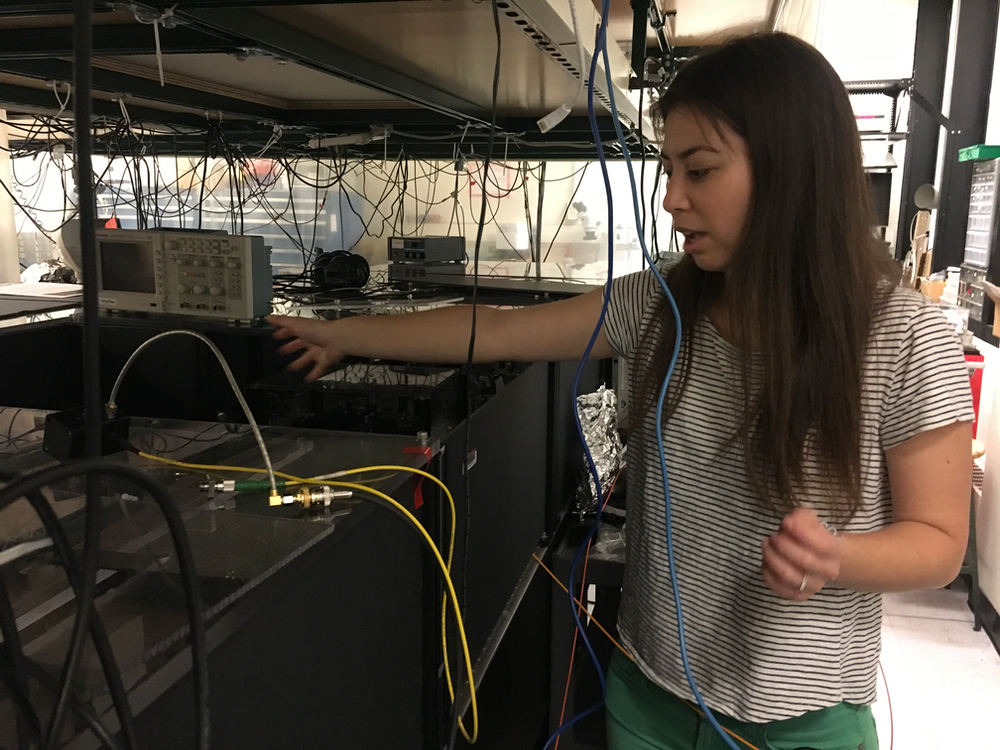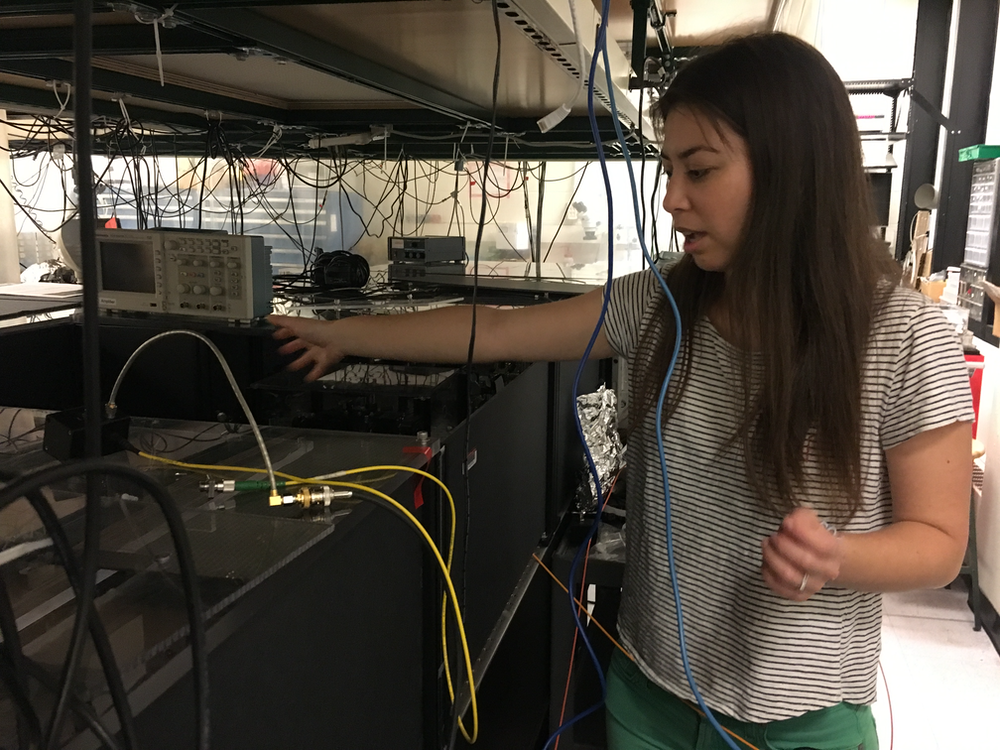Interaction Detection with Attosecond Perfection
Despite growing up in a two-physicist household, Mina Bionta didn’t always want to go into physics. As a child she dabbled in other sciences, trying to forge her own path, but by the time she finished high school her views on being a physicist had changed. Bionta went on to study physics at university, completing several summer internships at different labs. “A lot of my opportunities came from cold-emailing professors to see if they would hire me,” she says. One of those opportunities was at SLAC National Accelerator Laboratory in California. At the time, in 2009, SLAC’s Linac Coherent Light Source (LCLS)—the world’s first x-ray free electron laser—was just starting up, and Bionta spent her internship there syncing the system to optical lasers to prepare it for taking snapshots of atoms and molecules on ultrafast timescales.
Bionta loved the light-matter interaction experiments enabled by SLAC’s x-ray laser and ended up doing a Ph.D. on the topic of ultrafast-laser-induced emission of electrons from metallic nanostructures. Since then, she’s been developing spectroscopy tools that use these rapid emissions to understand how light interacts with materials. In August Bionta finished a postdoc at the Massachusetts Institute of Technology and in October she will return to SLAC as a staff scientist. There she plans to develop new ways to monitor the interaction of x-ray and visible light pulses with matter. Physics Magazine spoke with Bionta about why she loves lasers and ultrafast optics experiments.
All interviews are edited for brevity and clarity.
What’s your favorite thing about working with lasers?
I like that the interaction of a laser with a material can lead to so many different phenomena, such as phase transitions, nonlinear behaviors, and chemical reactions. Light-matter interactions are also very pure: light supplies only energy to the matter, and scientists can control exactly how much energy goes into the system just by changing simple parameters, such as the color of the light.
What laser problem are you currently working on?
My team and I have been developing a tiny device that can trace the shape of ultrafast laser pulses before and after they interact with any material that transmits laser light. The method should allow us to probe how these pulses interact with a material—for example, how they transfer energy to a photovoltaic film—without damaging that material.
Why is measuring those interactions important?
It’s important for the understanding of a material’s electronic and atomic properties. There are two ways scientists measure light-matter interactions. One way is to measure the light’s absorption spectrum after it has interacted with a material. But that approach can be problematic: if the interaction induces a phenomenon with very fast dynamics, such as a chemical reaction, the sharp peaks expected in the absorption spectrum from the different material components can blend into one large hump.
The other way is to directly measure the phase and amplitude of the light before and after it interacts with a material by measuring the light’s waveform over time. These measurements are difficult, as they require the measurement technique to have extremely precise time resolution. But we can get this precision by inducing the emission of extremely fast bursts of electrons.
How do you do that?
Via a neat trick that involves nanometer-sized antennae. Our device, which is the size of a microchip, consists of several of these nanoantennae. The antennae’s shapes are carefully designed to amplify the electric field of incoming light. The device is placed on top of or next to a material of interest. That material is then excited by the ultrafast pulsed laser, and information about how that laser interacts with the sample is read out with the device.
When a laser pulse enters a nanoantenna, the field at the tip becomes so strong that it causes the tip to eject a burst of electrons. Fire multiple laser pulses at a tip and the result is a rapid series of short intense electron bursts, with each burst containing information about the light entering the tip. The time resolution of the bursts is less than a half-cycle of the illuminating laser pulse, which for our experiments is less than a femtosecond. So we can monitor these bursts to probe light-matter interactions with fast time resolution.
How exactly do you monitor the bursts
Every incoming laser pulse drives the nanoantennae to emit a burst of electrons. The electrons in each of these bursts are collected by a nanowire that sits perpendicular to the antennae array. The nanowire carries a current that is also driven by the laser’s electric field. The interaction of the nanowire with an electron burst shifts the current’s intensity, giving us time-dependent information about the waveform of the light. We map out those current changes on an external detector.
Why do scientists want this information?
To follow how light-dependent phenomena occur on very fast timescales. For example, plant scientists might use our technique to study the transfer of energy from sunlight to plant cells. But the technique isn’t just for biological samples. It’s for medicine, photovoltaics, food safety, gas sensing, and drug discovery. The device can be used to study nonlinear phenomena in condensed matter systems, such as high-harmonic generation, the dynamics of excitons in photovoltaic systems, and the spectroscopic signatures of individual molecules.
–Rachel Berkowitz
Rachel Berkowitz is a Corresponding Editor for Physics Magazine based in Vancouver, Canada.





